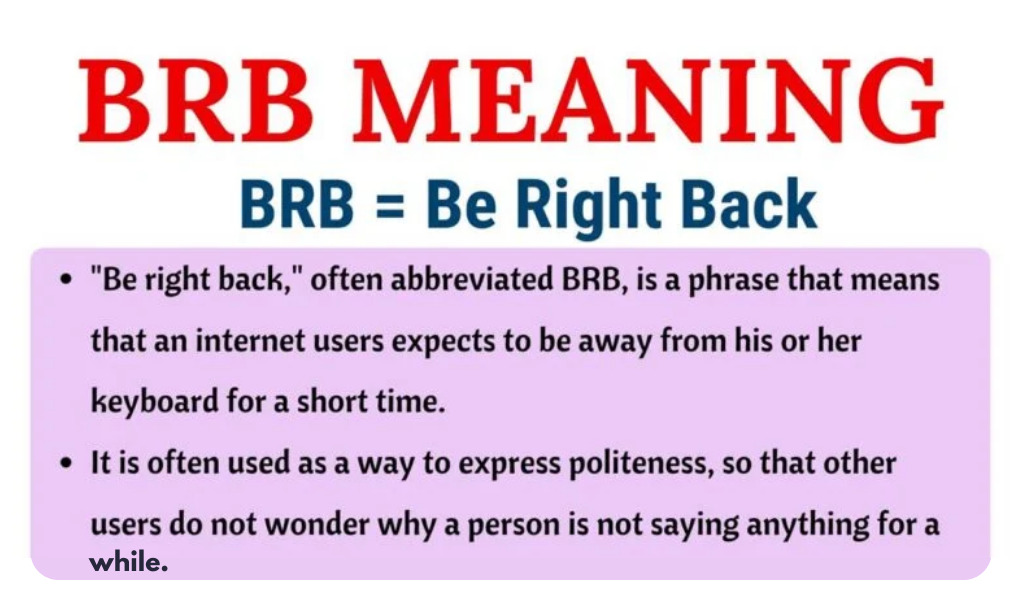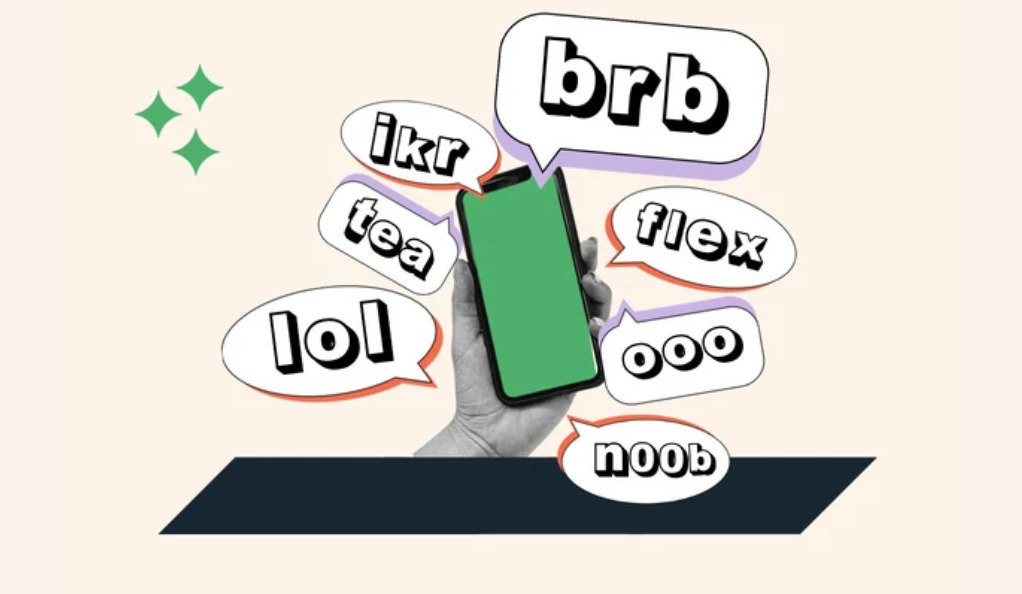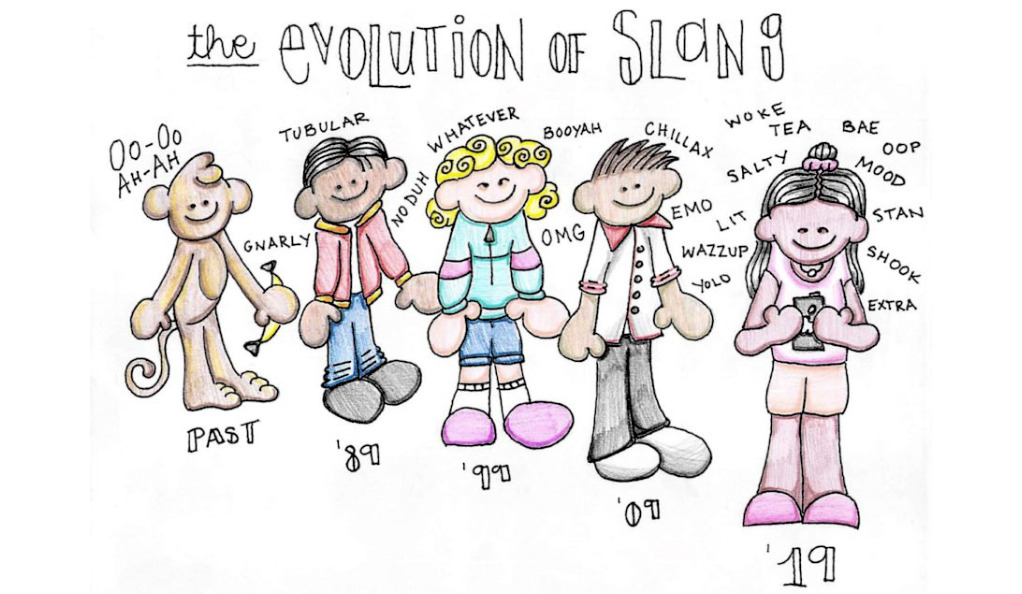Introduction
In today’s digital age, communication has evolved in ways that were once unimaginable. With the rise of the internet and the proliferation of digital platforms, a new language has emerged, one that is both concise and expressive. This language, often referred to as “internet slang,” has become an integral part of our online interactions. From the early days of chat rooms to the current era of social media and instant messaging, internet slang has not only facilitated communication but also shaped online cultures and communities.
A Brief History of Digital Communication
To truly appreciate the evolution of internet slang, it’s essential to understand the history of digital communication. In the early 1990s, as the internet began to gain traction, chat rooms and forums became popular platforms for online interaction. These platforms, with their real-time communication capabilities, necessitated a form of language that was quick to type and easy to understand. Thus, the birth of internet slang.
Table 1: Evolution of Digital Communication Platforms
| Year | Platform | Notable Features |
|---|---|---|
| 1990s | Chat Rooms | Real-time group chats, early use of internet slang |
| 2000s | Instant Messengers | Personal chats, emoticons, status messages |
| 2010s | Social Media | Posts, comments, hashtags, multimedia sharing |
| 2020s | Messaging Apps | Stickers, GIFs, voice messages, video calls |
The History of “BRB” and Its Kin
Among the earliest and most iconic of internet slang terms is “BRB,” an abbreviation for “Be Right Back.” Its origin is deeply rooted in the real-time nature of chat rooms. When a user needed to step away from their computer for a brief moment, typing out “Be Right Back” was cumbersome. Instead, “BRB” became a quick and universally understood way to convey temporary absence without breaking the flow of conversation.

Comparison Table: Early Internet Slang Terms
| Slang | Full Form | Usage Context |
|---|---|---|
| BRB | Be Right Back | Indicating a short absence |
| LOL | Laugh Out Loud | Responding to something funny |
| TTYL | Talk To You Later | Signing off, with an intention to chat later |
| OMG | Oh My God | Expressing surprise or disbelief |
The Cultural Significance of Internet Slang
Beyond mere convenience, internet slang carries cultural significance. It’s a reflection of the times, capturing the essence of the digital age and the nuances of online communities. Slang terms become more than just words; they embody emotions, experiences, and shared understandings.
As we delve deeper into the world of internet slang, we’ll explore its origins, its impact on communication, and its undeniable influence on digital culture. From “BRB” to the myriad of terms that have since emerged, this journey promises to be both enlightening and entertaining.
The Origins of Internet Slang
The digital realm, with its rapid pace and global reach, necessitated a form of language that could keep up. As people from diverse backgrounds and cultures began to interact online, there was a clear need for a universal, concise, and expressive mode of communication. This need gave birth to internet slang, a dynamic and ever-evolving lexicon that has since become a hallmark of online interactions.
The Early Days: Bulletin Boards and Chat Rooms
Before the rise of social media platforms and instant messaging apps, bulletin board systems (BBS) and chat rooms were the primary modes of online communication. These platforms, often rudimentary in design, were vibrant hubs of discussion, debate, and camaraderie. Given the real-time nature of these platforms, users sought ways to convey their thoughts quickly and efficiently. This urgency led to the creation of some of the earliest internet slang terms.
Table 2: Pioneering Platforms and Their Slang Contributions
| Platform | Popular Slang Terms | Usage Context |
|---|---|---|
| Bulletin Boards | AFAIK, IMO, RTFM | “As Far As I Know”, “In My Opinion”, “Read The Manual” |
| Early Chat Rooms | BRB, AFK, GTG | “Be Right Back”, “Away From Keyboard”, “Got To Go” |
The Role of Pop Culture
Pop culture played a pivotal role in popularizing certain slang terms. Television shows, movies, and music not only reflected the slang of the times but also introduced new terms that were quickly adopted by the masses. For instance, the term “BFF” (Best Friends Forever) gained immense popularity through its frequent use in popular media, eventually becoming a staple of internet slang.
The Globalization of Slang
As the internet expanded its reach, so did internet slang. What started as English-centric abbreviations soon took on global dimensions. Non-English speaking countries began to incorporate and adapt English slang terms, while also introducing their own unique slang to the mix. This cross-cultural exchange enriched the digital lexicon, making it more inclusive and diverse.
The Universal Appeal of “BRB”
“BRB” stands as a testament to the universal appeal of internet slang. While its origins are firmly rooted in English, the term has been adopted by various languages and cultures. Whether you’re in a chat room in Tokyo or a messaging app in Buenos Aires, “BRB” is instantly recognizable, transcending linguistic barriers. Its simplicity and clarity make it a quintessential example of how internet slang facilitates global communication.
The Rise of BRB and Its Variations
The term “BRB” is emblematic of the internet slang phenomenon. Its widespread adoption and enduring popularity offer a fascinating lens through which we can study the evolution and impact of digital lingo. But what makes “BRB” so special? And how has it managed to retain its relevance over the years?
In the bustling chat rooms of the late 1990s and early 2000s, speed was of the essence. Users needed a way to convey their temporary absence without typing out the full “Be Right Back.” Thus, “BRB” was born. Its concise form and clear message made it an instant hit among users.

Table 3: Evolution of “BRB” Over the Years
| Year | Platform | Variation | Usage Context |
|---|---|---|---|
| 1990s | Chat Rooms | BRB | Original form indicating a short break |
| 2000s | Instant Messengers | BRB, BBL | Introduction of “Be Back Later” as an extended break |
| 2010s | Social Media | BRB, BRB2M | “Be Right Back To Message”, indicating a return to chat |
Beyond Chat Rooms: BRB in Modern Communication
While “BRB” originated in chat rooms, its utility extended far beyond. As communication platforms evolved, so did the usage of “BRB.” On instant messengers, it became a polite way to signal a brief hiatus. On social media, it transformed into a playful nod to one’s temporary digital absence. Even in the world of business, “BRB” found its place, signaling a short break during virtual meetings or team chats.
BRB in Business – A Digital Etiquette
The adoption of “BRB” in professional settings underscores its versatility. In a world where business communication is increasingly digital, terms like “BRB” help humanize interactions. Whether it’s a quick message to a colleague during a virtual meeting or an indication of a short break during a team chat, “BRB” serves as a bridge between formal and informal communication, making digital interactions more relatable and genuine.
The Cultural Impact of “BRB”
“BRB” is more than just an abbreviation; it’s a cultural icon. It has been referenced in pop culture, from TV shows to music lyrics, reflecting its widespread recognition. Moreover, its variations, such as “BBL” (Be Back Later) or “BRB2M” (Be Right Back To Message), showcase the dynamic nature of internet slang and its ability to adapt to changing digital landscapes.
Internet Slang in Business Communication
The digital transformation of the business world has brought with it a unique blend of formal and informal communication styles. While traditional business etiquette remains paramount, the influence of internet slang, epitomized by terms like “BRB,” is undeniable. But how did such casual terms find their way into the boardrooms and business emails? And what does this mean for the future of professional communication?

The Digital Shift in Business
With the advent of technologies like instant messaging, video conferencing, and collaborative tools, the business world has become more connected than ever. These platforms, while facilitating real-time communication, also introduced a more relaxed and immediate style of interaction. It’s in this environment that internet slang began to seep into professional communication.
Table 4: Internet Slang in Business Platforms
| Platform | Popular Slang Terms | Usage Context |
|---|---|---|
| Business Messengers | BRB, IMO, FYI | Quick updates, sharing opinions, providing information |
| Emails | EOD, TBA, PFA | “End Of Day”, “To Be Announced”, “Please Find Attached” |
| Video Conferencing | BRB, GTG | Indicating short breaks, ending calls |
Balancing Professionalism with Relatability
While the use of slang in business communication might raise eyebrows, it serves a crucial purpose: humanizing digital interactions. In a virtual meeting, a quick “BRB” can convey the same message as stepping out of a physical meeting room for a moment. It’s succinct, universally understood, and adds a touch of relatability.
The Cultural Impact of Slang Terms
Internet slang, while rooted in the digital realm, has had a profound influence on broader culture. Terms that originated in chat rooms and forums have made their way into everyday conversations, pop culture, literature, and even academia. This permeation of slang terms into various facets of life underscores their cultural significance and enduring appeal.
From Digital to Daily Life
It’s not uncommon to hear terms like “LOL,” “OMG,” or “BRB” in face-to-face conversations today. What began as shorthand for online communication has become a part of our daily lexicon. This transition from the screen to real-life conversations highlights the influence of digital interactions on our language and communication patterns.
Pop Culture Embraces Slang
Movies, TV shows, music, and literature have not remained immune to the allure of internet slang. Characters in contemporary films text “BRB” or exclaim “OMG” in moments of surprise. Song lyrics incorporate slang terms to resonate with younger audiences, and authors use them to lend authenticity to their narratives.
Table 5: Slang in Pop Culture
| Medium | Examples of Slang Usage |
|---|---|
| Movies & TV Shows | Characters using “LOL” during humorous moments or texting “BRB” |
| Music | Lyrics like “OMG, did you see what she wore?” |
| Literature | Modern novels depicting digital conversations with terms like “TTYL” or “BRB” |
Education and Slang
Academia, traditionally a bastion of formal language, has also taken note of the internet slang phenomenon. Linguists study the evolution of these terms, their impact on language structures, and their sociological implications. Universities offer courses on digital communication, where slang terms are discussed, dissected, and debated.
The Evolution of Other Popular Slang Terms
While “BRB” stands as a hallmark of internet slang, it’s just one thread in the vast tapestry of digital lingo. Over the years, countless slang terms have emerged, each with its own unique origin, context, and cultural impact. Exploring these terms offers a deeper understanding of the dynamics of online communication and the factors that drive linguistic innovation.

The Lifecycle of Internet Slang
Every slang term goes through a lifecycle: birth, rise in popularity, potential mainstream adoption, and, in some cases, eventual decline or transformation. For instance, while “BRB” has remained relatively consistent in its meaning, other terms like “YOLO” (You Only Live Once) saw a meteoric rise and then waned, only to be replaced by newer terms.
Table 6: Popular Slang Terms and Their Evolution
| Slang | Full Form | Peak Popularity | Current Status |
|---|---|---|---|
| YOLO | You Only Live Once | Early 2010s | Less frequent use |
| FOMO | Fear Of Missing Out | Mid 2010s | Still popular |
| SMH | Shaking My Head | Late 2010s | Widely used |
| TBH | To Be Honest | Early 2010s | Evolved to “TBH” posts on social media |
The Role of Platforms in Shaping Slang
Different digital platforms have played pivotal roles in popularizing specific slang terms. For instance, Twitter, with its character limit, became a breeding ground for abbreviations. Platforms like TikTok introduced terms like “Bop” (a catchy song) or “No Cap” (no lie), which quickly gained traction among younger users.
The Enduring Legacy of “LOL”
Much like “BRB,” the term “LOL” (Laugh Out Loud) has had a lasting impact on digital communication. Originating in the early days of chat rooms, “LOL” has become a universal expression of amusement. Its variations, such as “ROFL” (Rolling On the Floor Laughing) and “LMAO” (Laughing My Ass Off), further enriched the digital lexicon. The term’s adaptability and widespread recognition make it a cornerstone of internet slang.
The Influence of Global Cultures
The internet is a melting pot of cultures, and this diversity is reflected in the slang terms that emerge. While many terms have English origins, non-English speaking regions contribute their own unique slang to the mix. For instance, “Kawaii” (cute in Japanese) or “JOMO” (Joy Of Missing Out, an antithesis to FOMO) have found their place in the global digital vocabulary.
Conclusion
The world of internet slang, with its vibrant lexicon and dynamic evolution, stands as a testament to the transformative power of the digital age. From the early days of chat rooms to the multifaceted platforms of today, the language we use online has mirrored the rapid advancements and cultural shifts of our times.
“BRB,” “LOL,” and countless other terms have not just facilitated communication; they’ve shaped it. These terms have bridged gaps, fostered understanding, and added color to our digital conversations. They’ve transitioned from mere abbreviations on a screen to cultural touchstones, influencing everything from pop culture to business communication.
But beyond the terms themselves, the story of internet slang is a story of human adaptability and creativity. It’s about our innate desire to connect, to express, and to be understood. In an era defined by bytes and bandwidth, these simple terms have humanized our digital interactions, reminding us of the people behind the pixels.
As we stand on the cusp of new technological frontiers, from augmented reality to advanced AI, one thing remains certain: language will continue to evolve. New slang terms will emerge, old ones might fade, but the essence of digital communication – the drive to connect and understand – will endure.
In the grand tapestry of human communication, internet slang is but a recent thread. Yet, its impact is profound, weaving a narrative of a world brought closer by technology, a world where a simple “BRB” can resonate across continents and cultures. As we look to the future, we do so with anticipation, eager to see how the next chapter of this digital linguistic revolution unfolds.
At bitvestment.software, our commitment is to deliver unbiased and reliable information on subjects like cryptocurrency, finance, trading, and stocks. It's crucial to understand that we are not equipped to offer financial advice, and we actively encourage users to conduct their own comprehensive research.
Read More